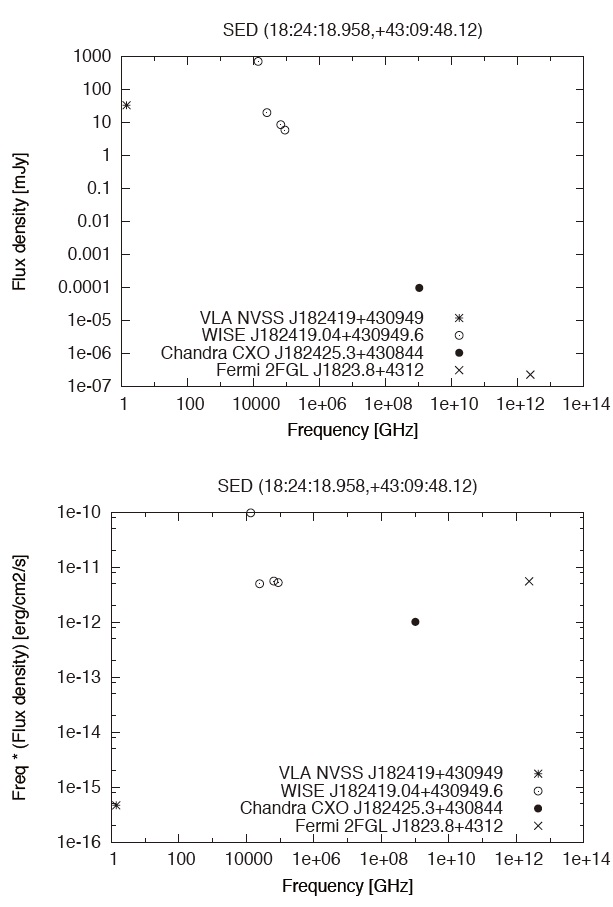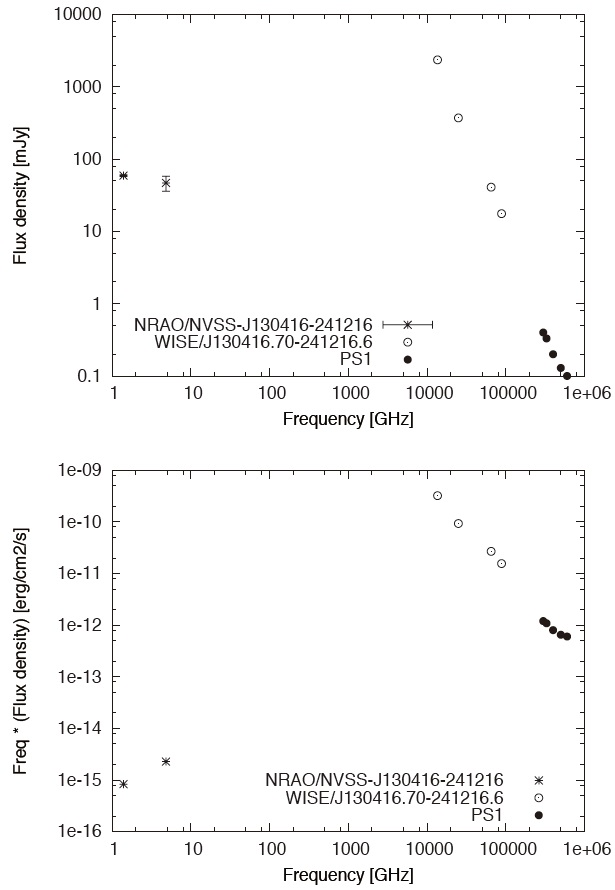



The nature of high-energy (>100 MeV) gamma-ray sources, lacking counterparts at other wavelengths, remains an enigma decades after they have been discovered. The recent gamma-ray satellite Fermi Large Area Telescope (LAT), launched in 2008, has made all sky monitoring observations in a wider energy range of 100 MeV ? 300 GeV. The Second Fermi Gamma-ray LAT (2FGL) Catalog has released 1873 sources, which are mostly identified as the beamed AGN Blazars, supernova remnants or pulsars as expected (Nolan et al. 2012). However, about 30% of gamma-ray source are still unidentified sources.
One of uncovered type as gamma-ray emitter is cluster of galaxies. Totani & Kitayama (2000) proposed that forming clusters of galaxies emit gamma-rays by high-energy electrons accelerated in the shock wave. They assumed that 5% of the shock energy in clusters accelerates electrons to much higher energy, and expected more than a few thousand gamma-ray clusters could be detected by Fermi/LAT. However, there is no report about association with cluster of galaxies yet from the 2FGL catalog so far. 2FGL J1823.8+4312 and 2FGL J1304.1-2415 are two possible candidates to be associated with clusters. Therefore, we use multi-wavelength data to constrain their SED types in order to identify their source types.
Based on the Fermi/LAT data, there are no pulsations like millisecond pulsars that are one of the strong counterparts of γ -ray source. In the 95% containment radius of 2FGL J1823.8+4312 determined by Fermi/LAT, there is a known cluster detected in X-ray, MACS-J1824.3+4309. The cluster is the brightest X-ray source within the Fermi region. In fact, there was no other X-ray source found by ROSAT observations. To filter out other possibilities such as Blazar, AGN, we make use of available X-ray (Chandra), optical (SUBARU, Pan-STARRS, and SDSS), infrared (WISE), and Radio (NVSS catalog) data. Using X-ray data taken by Chandra, we have identified 47 point sources in the Fermi region. At the same time, we have also picked up non-stellar like objects using optical color and temporal variability.
Pan-STARRS and SDSS have perfectly covered the temporal and the position uncertainty. We found there is no typical Blazar that have strong temporal variability in various wavelength, but there is one possible candidate of γ -ray emitter, CXO J182409.1+431404. This source is localized to R.A.(J2000) = 18h24m09s, Dec.(J2000) = +43o14'04'' with position uncertainty of 1.54''. The light curve of the Fermi/ LAT data does not show clear variability, and nor does that of optical data (SDSS and Pan-STARSS 3
Another Fermi source associated with X-ray cluster is 2FGL J1304.1-2415. There are two X-ray clusters, Abell 1664 and Abell 3541, in this Fermi region. We use available X-ray (Chandra), optical (SDSS and Pan-STARRS), infrared (WISE), and Radio (NVSS catalog) data to filter out other possibility. We find one bright Chandra X-ray point source as a candidate of X-ray counterpart of 2FGL J1304.1-2415,
and no other bright X-ray source found by ROSAT observations. This source is CXO J130416.6-241217 and localized to R.A.(J2000) = 13h04m17s, Dec.(J2000) = -24o12'18'' with position uncertainty of 0.69''. Again, the light curve of the Fermi/LAT data does not show clear variability, and nor does that of optical data (SDSS and Pan-STARRS 3
Base on the SED of two Fermi sources (Figs. 1 and 2), the flux at 1011-12 Hz is necessary for us to constrain the SED at synchrotron side. This wavelength is located around the millimeter (mm) and the sub-millimeter (sub-mm) bands. So far there is no flux measurement at mm/sub-mm wavebands. Therefore, we proposed SMA observations at 230 GHz band for both sources. We have already got data and are doing data reduction and further analysis

